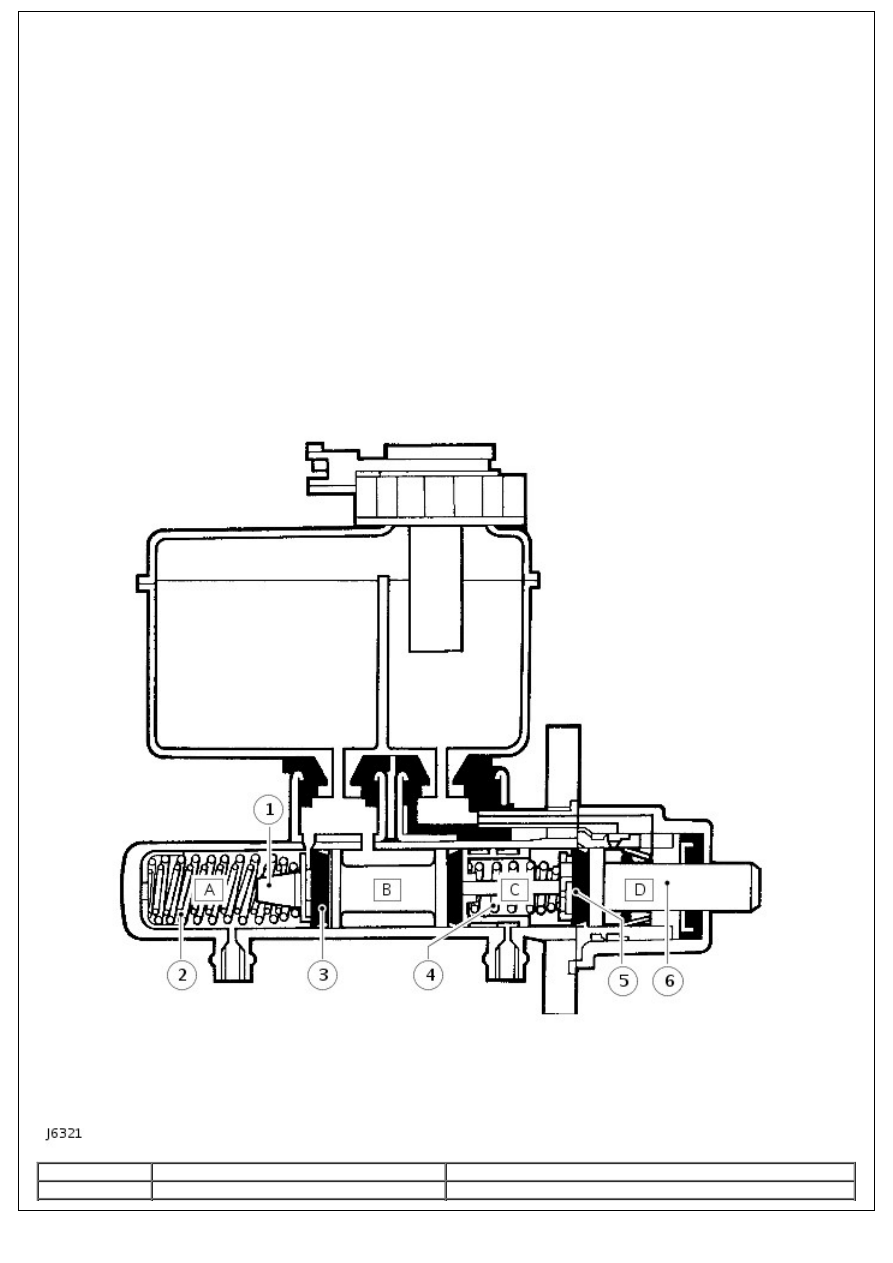Defender. Manual - part 34

Brake System - General Information - Brake System
Description and Operation
Master cylinder description
The mechanical components of the hydraulic braking system consists of four piston caliper disc brakes at the front and
two piston caliper disc brakes at the rear.
Vented front brake discs are fitted as standard on 110/130 models, while 90 models have solid discs. However, on 90
models with a heavy duty chassis, vented front discs may also be fitted.
A cable controlled parking brake operates a single drum brake mounted on the output shaft of the transfer gearbox and
is completely independent of the main braking system.
The basic hydraulic system involves 2 separate and independent primary and secondary circuits which permits a degree
of braking should a fault occur in one of the circuits. The primary circuit operates the rear brake calipers and the
secondary circuit the front brake calipers.
Master cylinder components
Item
Part Number
Description
1
-
Secondary plunger